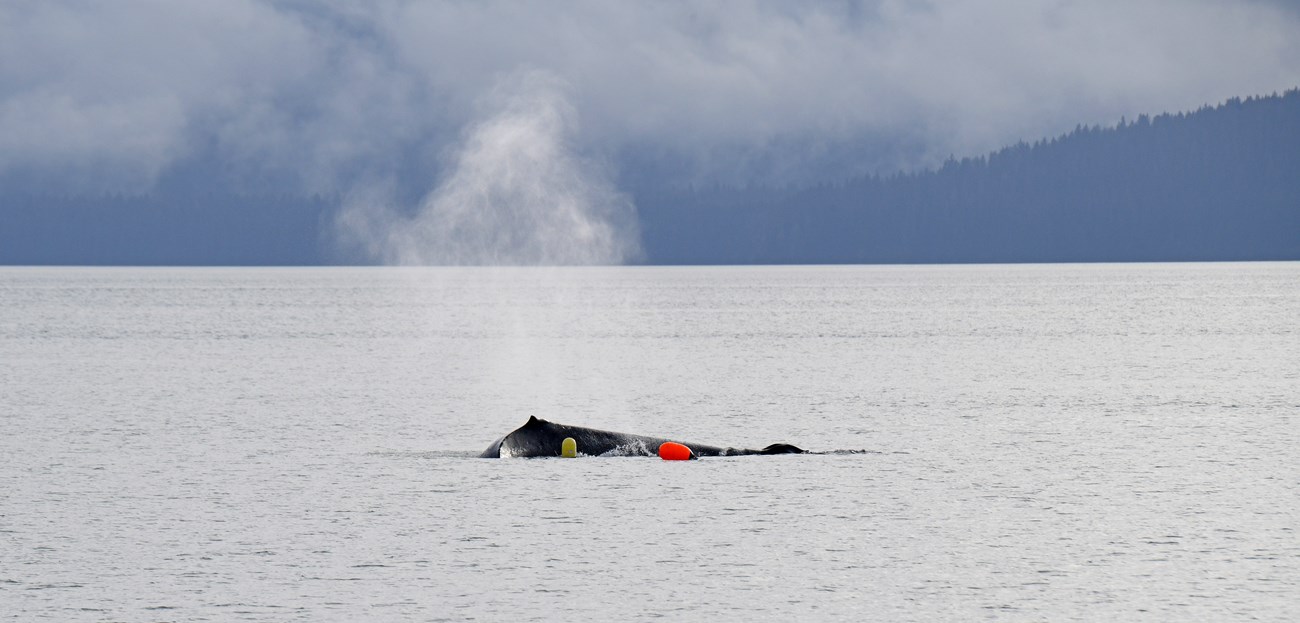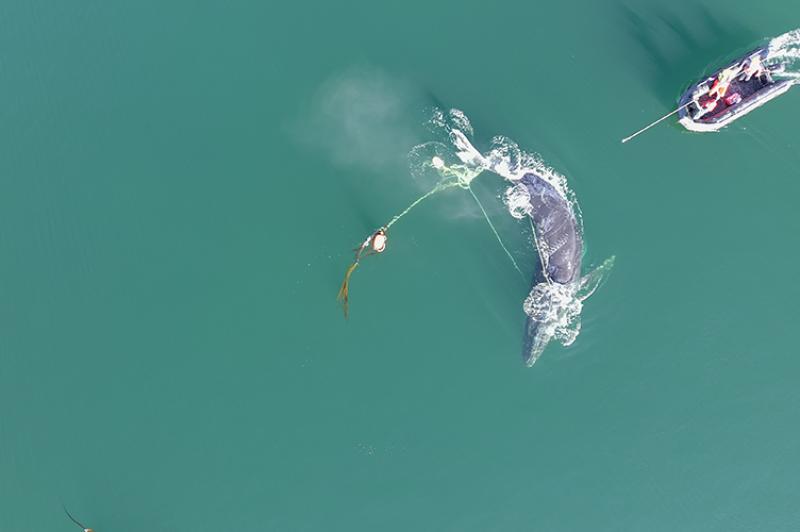Wildlife rescue efforts might be as simple as removing that spider from your bedroom back into the garden, or helping an animal caught in a snare. But how do you go about saving some of the largest animals on Earth when they get into trouble, especially if they’re in the sea? Fortunately for one juvenile humpback whale (Megaptera novaeangliae), trained responders were on hand to help.
Near Gustavus, Alaska, the National Oceanic and Atmospheric Administration (NOAA) began to receive messages of concern after a whale was spotted entangled in fishing ropes and trailing two buoys, and even a crab pot thought to weigh around 136 kilograms (300 pounds). Using drone images and photography, the team were able to work out how the whale was entangled and formulate a plan to help.

The whale was first seen tangled in the line with two buoys trailing behind its tail.
Image courtesy of NPS Photo / Tania Lewis; image taken under NOAA MMHSRP permit no. 24359
“This was a complicated entanglement with a line through the whale’s mouth, and wrapped around the animal’s tail stock,” said Fred Sharpe, advanced large whale entanglement responder with Alaska Whale Foundation, in a statement. “The drone imagery assisted tremendously with our understanding of the entanglement and how to prioritize our cutting attempts.”
The team were fortunate to have good weather conditions and calm waters in their attempt to help the whale. They were equipped with specialized tools that can be seen in the video, including a knife on the end of an 8-meter (25-foot) pole and modified grappling hooks to cut the lines.
“The turning point came when we were able to cut the rope that ran through the whale’s mouth and was wrapped around its tail,” said Chris Gabriele, a whale biologist with Glacier Bay National Park and Preserve.

Using drone images, the team were able to work out where the line needed to be cut to reduce stress for the animal.
Image courtesy of NPS Photo / Sean Neilson; taken under NOAA MMHSRP permit no. 24359
After the responders were able to free the whale from the line, it swam away. The following day the team were able to identify it using fluke pattern photos as an individual known as SEAK-5490. The Glacier Bay National Park team plan to look for this individual closely over the next few weeks to make sure there are no lasting ill-effects from the entanglement, and that it returns to a normal feeding and migration pattern.
According to the World Wildlife Fund for Nature, 8 million tonnes of plastic are dumped into the oceans every year, while lost and abandoned fishing equipment make up the majority of the plastic in the ocean, according to a 2019 Greenpeace report.
The National Park team also stress that if you see a whale in trouble, you should not to attempt to solve the problem yourself, but instead contact the relevant local authority, NOAA’s whale entanglement hotline, or a local coastguard.
Source Link: Watch As Humpback Whale Freed From Fishing Line And 136-Kilogram Crab Pot